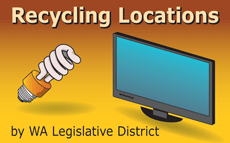A Vision for a Circular Economy for Plastics in Canada
This February 2019 report by Usman Valiante for Smart Prosperity Institute (PDF) provides a vision and roadmap for converting our approach to plastics from a take-make-waste to a circular economy, characterized by a flow of materials in a closed loop. Value is returned into the cyclical, productive system, rather than wasted. And the report explores the role of EPR to achieve this vision.
"Extended Producer Responsibility (EPR) assigns producers the property rights for the end-of-life wastes associated with their products and packaging and requires them to meet collection and recycling performance standards for those wastes. As such, it requires producers to establish reverse supply chains (either directly or through commercial arrangements with third parties) to collect, process and market their products or packaging.
EPR is performance-based regulation that “specifies required outcomes or objectives, rather than the means by which they must be achieved”.
"EPR is also a market-based policy instrument. In an openly competitive market, end-of-life management costs become yet another cost of business providing producers with an incentive to reduce those costs through efficiency. Such efficiency may be gained through product redesign (i.e. reduction or to enable systems of reuse), the adoption of existing waste management best practices, or through investment in new and innovative technologies and practices to reduce, collect, reuse and recycle producers’ wastes."
It is "both ineffective and inefficient" when municipalities operate individual recycling systems “with little or no coordination with other municipal recycling systems and with no connection to the producers whose packaging they manage... As such, each municipality is left to address the changing packaging mix and commodity market realities within its own system."
The Recycle BC extended producer responsibility program has "induced $20 million in capital investments in the recycling of PPP (a significant portion of which is plastic recycling related), expanded the types of plastics collected, and lowered contamination of collected materials, while concurrently insulating both producers and BC municipalities from commodity risks posed by the closure of Asian secondary plastics markets."
